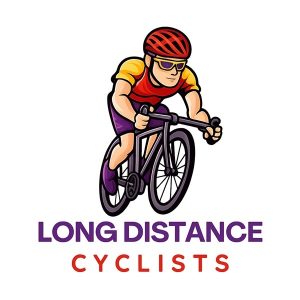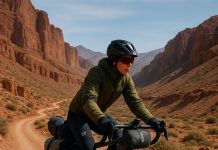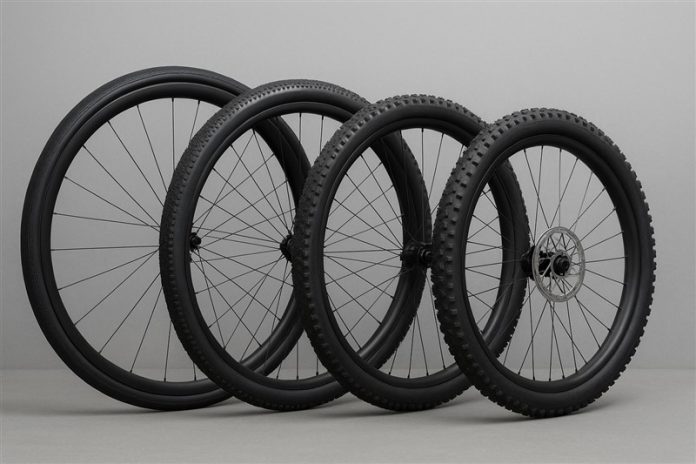For long-distance cyclists, few decisions matter more than choosing the right wheel and tyre combination. Whether you’re tackling a 200 km brevet, a multi-day bikepacking adventure, or an ultra-distance race across continents, your wheels and tyres determine how efficiently you roll, how comfortable you feel, and how reliably you can cover the distance.
But with so many options—different wheel diameters (700c, 650b/27.5”, 29”, 26”), tyre widths, tubeless systems, and rim profiles—it can be overwhelming to know what’s best for your riding style and terrain. This guide breaks it all down and explores the most effective wheel and tyre setups for endurance cycling, with detailed recommendations for different road surfaces and conditions.
Why Wheel and Tyre Choice is Critical in Endurance Cycling
Unlike short races or training sessions, endurance and ultra-distance rides demand a setup that balances speed, durability, comfort, and reliability. A wheel that saves a few watts aerodynamically but is prone to punctures could cost hours of downtime. Similarly, a tyre that’s bulletproof but overly heavy may drain your energy before the ride is complete.
The best choice depends on your priorities: are you aiming for maximum efficiency on smooth tarmac, or versatility for mixed terrain? Let’s start by looking at the foundation—wheel diameters.
Wheel Diameters Explained: Which is Best for Long Distance?
700c (ISO 622 mm)
- Most common road wheel size.
- Favoured for endurance road cycling, audax, and randonneuring.
- Rolls efficiently on smooth tarmac and is compatible with tyre widths from 23 mm up to 45 mm (depending on frame clearance).
- Best use case: Road-based endurance events like Paris-Brest-Paris, Transcontinental Race, or long brevets.
Strengths:
- Huge availability of tyres worldwide.
- Rolls fast with low rolling resistance.
- Optimal for sustained high speeds on tarmac.
Limitations:
- Less forgiving on very rough terrain compared to smaller wheels.
650b / 27.5” (ISO 584 mm)
- Once a mountain bike standard, now popular in gravel and bikepacking setups.
- Accepts wider tyres (40–55 mm+) while keeping overall wheel diameter similar to a 700c with narrower tyres.
- Best use case: Mixed-terrain rides, gravel brevets, bikepacking across rough roads.
Strengths:
- Larger volume tyres improve comfort and grip.
- Excellent for poor roads, gravel, or long bikepacking trips.
- Lower pressure reduces fatigue over rough surfaces.
Limitations:
- Slightly slower on smooth tarmac compared to 700c.
- Tyre availability can be more limited, especially internationally.
29” (ISO 622 mm, same bead seat as 700c but MTB width)
- Standard for modern mountain bikes.
- Accepts tyres from 2.0” (50 mm) up to 2.6”+.
- Provides rollover ability on rough terrain and trails.
- Best use case: Ultra-endurance MTB races, off-road bikepacking, and expedition touring.
Strengths:
- Stable and efficient over rocks, roots, and technical terrain.
- Excellent for unsupported adventures where comfort and traction are priorities.
Limitations:
- Heavier than 700c/650b setups.
- Overkill for road-based ultra-distance events.
26” (ISO 559 mm)
- Once the universal MTB size, still common in global touring.
- Favoured for world bike travellers because tyres and tubes are widely available in developing countries.
- Accepts tyres from 1.5” (38 mm) up to 2.4”+.
- Best use case: Round-the-world tours where availability is more important than performance.
Strengths:
- Universally available tyres and spares.
- Stronger wheel builds due to a smaller diameter.
- Comfortable with wide tyres for loaded touring.
Limitations:
- Slower rolling on tarmac compared to 700c.
- Less common in high-performance endurance bikes today.
Tyre Widths and Their Role in Long-Distance Cycling
23 mm – 25 mm
- Old road racing standard.
- Still rolls fast on smooth tarmac but not recommended for endurance.
28 mm
- Sweet spot for endurance road cycling.
- Comfortable, efficient, and now standard on many performance bikes.
32–38 mm
- Excellent for mixed road and light gravel.
- Provides cushioning without massive drag penalties.
40–50 mm+
- Gravel and adventure bike territory.
- Ideal for long mixed-surface brevets and bikepacking.
2.0”–2.4” MTB Tyres
- Maximum comfort, grip, and durability for trail-based ultra rides.
Things to Consider:
Tubeless vs Clincher for Long Distance Cycling
- Tubeless: Lower rolling resistance, puncture self-sealing, comfort at lower pressures. Great for endurance but requires setup and maintenance.
- Clincher with tubes: Simple, universally available, easy to repair mid-ride. Still preferred by some ultra-distance riders.
- Tubular: Rare in endurance cycling—hard to repair on the road.
Puncture Protection vs Rolling Resistance
Ultra-distance cyclists should prioritise tyres that strike a balance between efficiency and durability. Pure race tyres may feel fast but can result in multiple stops due to flats. On the other hand, heavily reinforced tyres may slow you down over thousands of kilometres.
The Role of Tyre Pressure in Long-Distance Comfort
Tyre pressure is often underestimated but plays a huge role in endurance performance. Running tyres at overly high pressures increases rolling resistance on real-world roads and transmits vibrations that contribute to fatigue.
Spoke Count and Strength
- Low spoke count (16–20 front, 20–24 rear): Lighter, more aero, but less forgiving if a spoke breaks mid-ride.
- Higher spoke count (24–28 front, 28–32 rear): Stronger and more durable, slightly heavier but far more practical for unsupported events.
For endurance, strength and reliability outweigh marginal weight savings.
Adding a Dynamo Front Wheel for Night Riding and Charging
For riders tackling long-distance events or multi-day tours, a dynamo front wheel can be a game-changer. By integrating a dynamo hub into your front wheel, you generate electricity as you pedal, powering reliable front and rear lights without relying on external batteries. This setup ensures consistent illumination during night riding and removes the stress of lights failing in the middle of a remote stretch.
Modern dynamo hubs, such as those from SON or Shutter Precision, are highly efficient, adding minimal drag while producing steady power output. Paired with a compatible USB charger, the dynamo can also top up essential devices like GPS units, smartphones, and power banks. While the upfront investment is higher than simply carrying rechargeable lights, the long-term benefits in reliability, safety, and independence make it a preferred choice for many endurance cyclists.
Best Wheel and Tyre Combinations by Discipline
| Discipline | Wheel Size | Tyre Width | Tubeless/Clincher | Best Setup |
|---|---|---|---|---|
| Road Endurance (Audax, PBP) | 700c | 28 mm | Tubeless | Carbon/aluminium 700c wheels + 28 mm tubeless (e.g., GP 5000 S TR) |
| Mixed Surface Brevets | 700c or 650b | 32–40 mm | Tubeless | 700c endurance wheels + 32 mm tubeless OR 650b + 47 mm gravel tyres |
| Bikepacking (Mixed Terrain) | 650b | 42–50 mm | Tubeless | 650b touring wheels + 47 mm endurance gravel tyres |
| Expedition Touring | 26” | 1.75–2.0” | Clincher | Strong 26” touring wheels + Schwalbe Marathon Plus |
| Ultra MTB Endurance | 29” | 2.0–2.4” | Tubeless | 29” MTB wheels + Maxxis or Schwalbe endurance MTB tyres |
Real-World Recommendations
- For Road Endurance:
700c with 28 mm tubeless endurance tyres (Continental GP 5000 S TR or Schwalbe Pro One). - For Gravel and Mixed Surface:
650b with 47 mm tubeless gravel tyres (WTB Byway or Schwalbe G-One). - For Bikepacking Adventures:
650b or 29” tubeless with wide tyres for comfort and grip. - For Round-the-World Touring:
26” wheels with 1.75–2.0” Schwalbe Marathon Plus—bulletproof reliability and worldwide availability.
Matching Setup to Terrain and Goals
The best wheel and tyre combination for long-distance cycling depends on your terrain, support level, and goals.
- Road-based riders: 700c with 28 mm tubeless is the gold standard.
- Mixed-terrain endurance: 650b or 700c with wider tubeless tyres offers comfort and resilience.
- Unsupported world touring: 26” with durable clinchers is still unbeatable.
- Off-road ultra races: 29” MTB wheels with tubeless 2.0–2.4” tyres balance grip and comfort.
Instead of asking “what’s the fastest setup?”, endurance cyclists should ask: “What setup will keep me moving hour after hour, day after day?” That’s where the real performance gains lie.
Final Thoughts: Prioritising Reliability Over Marginal Gains
The best wheel and tyre combination for long-distance cycling is not necessarily the lightest or the most aerodynamic. Instead, it is the one that keeps you riding smoothly for hundreds of kilometres with minimal risk of mechanical issues.
Endurance cyclists should lean toward wider tyres, tubeless setups, and wheels with higher spoke counts to maximise comfort and resilience. While professional racers may gamble on featherweight, race-day equipment, long-distance riders benefit most from practicality and durability.
Ultimately, the “best” setup is the one that allows you to ride confidently, knowing that your wheels and tyres will perform consistently from the first kilometre to the last.















